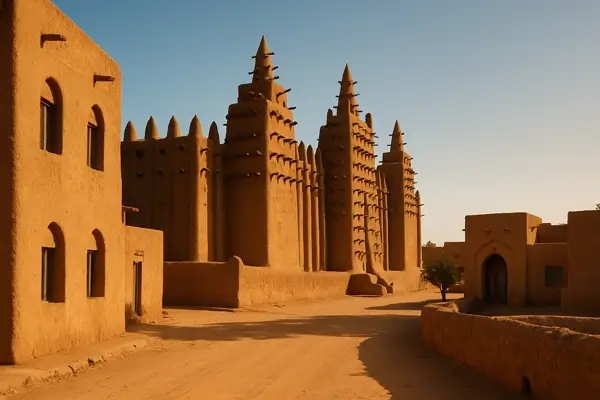
Landlocked Country in West Africa – Mali is a landlocked country located in West Africa, bordered by Algeria, Niger, Burkina Faso, Ivory Coast, Guinea, and Senegal.
Home to the Historic City of Timbuktu – Timbuktu, one of Mali’s most famous cities, was once a thriving center of trade and learning in the 15th and 16th centuries. It is now a UNESCO World Heritage site and is renowned for its ancient libraries and manuscripts.
Saharan Desert Region – A large part of northern Mali is located within the Sahara Desert, giving the country a diverse geography that includes vast desert landscapes, sand dunes, and oasis towns.
Rich Cultural Heritage – Mali has a rich cultural history, with notable music traditions, including the famous griots (traditional storytellers and musicians). The country is also home to the Bamako music scene, famous for Malian blues and African jazz.
The Great Mud Mosques – Mali is home to some of the world’s most beautiful and unique architecture, particularly the Great Mosque of Djenné, which is the largest mud-built structure in the world and an architectural wonder of the Sahel region.
Home to Several Ethnic Groups – Mali is home to a diverse range of ethnic groups, with the Bambara, Tuareg, Fulani, and Songhai peoples being some of the most prominent.
Niger River – The Niger River, one of Africa’s longest rivers, flows through Mali, providing essential water resources for the country and serving as a major route for trade and transport.
Mali’s Economy – Mali’s economy is largely based on agriculture, with cotton and gold mining as two of the main industries. Mali is one of Africa’s largest producers of gold.
A Diverse Landscape – From the Sahara Desert in the north to the savannah and tropical forests in the south, Mali’s landscape is incredibly diverse, offering a wide range of ecosystems.
UNESCO World Heritage Sites – In addition to Timbuktu, Mali boasts other UNESCO World Heritage Sites like the Cliff of Bandiagara, home to ancient cliff dwellings and the Dogon people.
